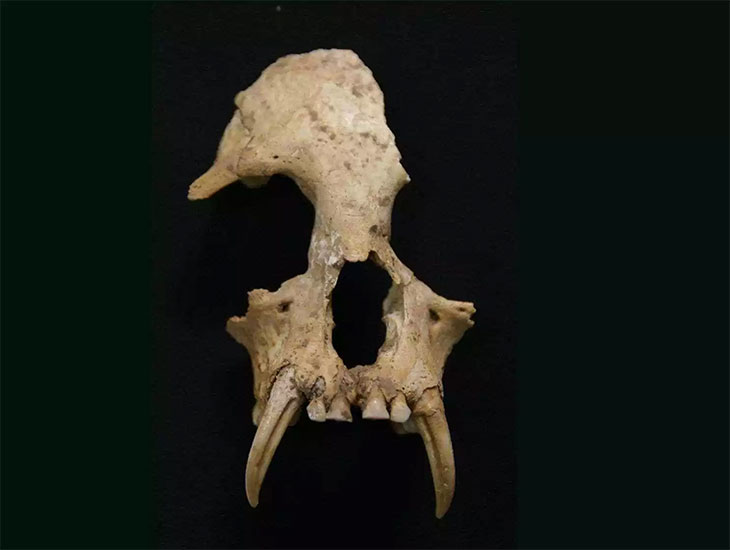Found new gibbons in the tomb of Ms. Qin Shihuang
The unearthed remains of the 2,200-year-old tomb of Grandma Emperor Qin Shihuang were determined to belong to a new extinct species.
The skeleton of the extinct gibbon breed has long been unearthed in the 2,200-year grave in the ancient capital of Chang'an, China, reported June 21. In ancient times, Chinese aristocrats used to raise gibbons as animals. The tomb also contains skeletons of leopards, lynx, bears, cranes and many domestic pets. The tomb belongs to the Lady, the first emperor of China, Qin Shihuang.

Junzi imperialis skull is different from 20 living gibbons today.(Photo: ZSL).
Named for the newly discovered gibbon breed, Junzi imperialis , the researchers concluded that the finding is particularly noteworthy because no gibbons live in the area today. Dr. Samuel Turvey, conservation biologist at London Zoological Association, said the record of gibbon in central China is limited to history books.
Dr. Turvey saw the excavated gibbon remains in 2004 when he visited Shaanxi Provincial Archaeological Institute in Xi'an. Although it is not allowed to take DNA samples from bones, Dr. Turvey and colleagues conducted gibbon skull size analysis to compare them with surviving species.
The skull and the jaw of another specimen are so 20 species of current gibbons that scientists speculate it belongs to an entirely new extinct group. They named the new species junzi and announced the discovery in the journal Science. According to Dr. Thomas Geissmann, a gibbon expert at the University of Zurich, the excavated skull may be the first evidence of apes that lived in Shaanxi, China.
Scientists warn about 60% of global primate species are in danger of extinction, including chimpanzees, gorillas and orangutans. Hainanese gibbons living on China's island of the same name may be the rarest mammals in the world, leaving only 26 individuals left. The pressure of primates today is facing the same as their ancient relatives, both from human activities and destroyed habitats.
- Found the palace in the tomb of Qin Shihuang
- China excavated the tomb of Qin Shihuang's grandmother
- Discover treasure in the tomb of Qin Shihuang
- The mystery of the weapons inside the tomb of Qin Shihuang - thousand years is still sharp
- The secret still covers the tomb of Qin Shihuang
- Discovering foreign soldiers in the tomb of Qin Shihuang
- The mystery of the tomb Qin Shihuang
- The sophisticated weapon of the terracotta army in the tomb of Qin Shihuang
- New discovery in the tomb of Qin Shihuang
- Tomb of Qin Shihuang - China
- The Greeks built an army to guard the tomb of Qin Shihuang
- Video: The army escorts Qin Shihuang to death
 Discovered an ancient centipede fossil 99 million years old
Discovered an ancient centipede fossil 99 million years old Discovered bat-like dinosaurs in China
Discovered bat-like dinosaurs in China Discovered a 200-year-old bronze cannon of the coast
Discovered a 200-year-old bronze cannon of the coast Discover 305 million-year-old spider fossils
Discover 305 million-year-old spider fossils Small primates in South Africa struggle to adapt to climate change
Small primates in South Africa struggle to adapt to climate change  Discover the pair of apes of the rarest primate species in the world
Discover the pair of apes of the rarest primate species in the world  New hypothesis toward migration of ancient people
New hypothesis toward migration of ancient people  Rare and white cheeked gibbons are released to the forest
Rare and white cheeked gibbons are released to the forest  High-lift gibbons in Vietnam increase in number
High-lift gibbons in Vietnam increase in number  Rescue a rare and precious black cheeked gibbon
Rescue a rare and precious black cheeked gibbon 